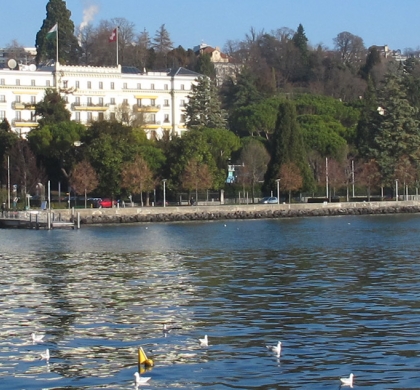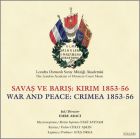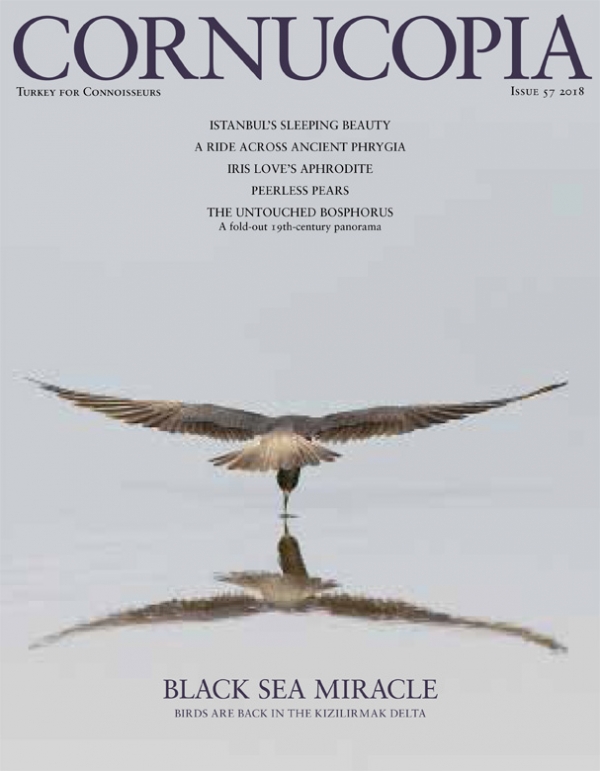Buy or gift a stand-alone digital subscription and get unlimited access to dozens of back issues for just £18.99 / $18.99 a year.
Please register at www.exacteditions.com/digital/cornucopia with your subscriber account number or contact subscriptions@cornucopia.net
Buy a digital subscription Go to the Digital EditionIs there truly such a thing as “the British imagination” and, if so, how does one go about mapping it? David Katz believes that as far as Turkey was concerned there was in both the 19th and the 20th centuries, and he investigates it with detailed research into the life and writing of five figures he sees as crucial to it, ending with the suggestion that English readers had images of Turkey “which kept Turkey-in-Europe without abandoning Turkey-in-Asia”.
I wish I was as certain. Turkophilia and, even more so, Turkophobia are minor but persisting themes in British life since 1800, often coupled with Philhellenism (ie, endorsement of Greek nationalism) and, less often, its opposite. Turkophobia surfaced unpleasantly and very stupidly, but unmistakably, in the 2016 Brexit referendum.
One would hardly guess anything like that from the five men David Katz selected for his searching and highly readable accounts, though his choices are a little unexpected: Edward Gibbon, Lord Byron, Benjamin Disraeli, John Buchan and Arnold Toynbee. Some of these are surely peripheral figures where Turkey is concerned.
Is it really correct to say that Edward Gibbon and the later chapters of The History of the Decline and Fall of the Roman Empire shaped 19th-century British perceptions of Turkey, or that John Buchan and Greenmantle did the same for the 20th century? As far as Gibbon’s influence is concerned, Katz quotes Byron saying that it was Sir Paul Rycaut’s Turkish History that had caught his imagination as a boy and made him want to visit the Levant. Greenmantle is surely remarkable for being an imagined rather than an accurate picture of conditions in Anatolia during the First World War. When writing it, Buchan drew on what he had heard about Turkey from his friend Aubrey Herbert, who knew and loved Turkey, but somehow this does not come through to the reader.
That said, Katz’s chapters are impressively researched, with a wealth of biographical detail, surprising facts and unfamiliar quotations, trawled not just from secondary printed sources but from documents in the National Archives and private memoirs. The spotlight brought to bear on each biographical portrait is compelling, though there are moments at which the author seems to condescend to his subjects. When Arnold Toynbee, earlier an outspoken Turkophobe writing propaganda during the First World War, helps save hundreds of Turkish civilians’ lives at the hands of the Greek army in 1921, Katz writes that he “behaved exactly like a young Englishman of his class, born… to the notion that he belonged to a privileged group of superior beings whose natural (if sometimes reluctant) task it was to lead and to rule, imposing British values on benighted natives”. Elsewhere Katz describes Toynbee as foolish. “Pedantry was never a temptation that Toynbee could resist,” he observes and seems to think that Toynbee, one of the best-known and most brilliant minds of his generation, was unwise in twice resigning what would have been jobs for life.
As for Byron, whose last words were “Poor Greece” but who is here listed among the Turkophiles, Katz believes that he was “eventually tricked into supporting a cause [the independence of Greece] in which he did not believe”. Some may find this judgement of the poet who wrote “The Isles of Greece” counter-intuitive.
Occasionally the droll tone oversteps the mark. WT Stead, a critic of Turkish actions in Bulgaria in 1876, “would meet his Maker on board the Titanic”– a rather flippant way to describe a heroic death helping women and children while refusing to board a lifeboat. Still, on many big topics, Katz hits the bullseye. He sees 1876 as a turning point for perceptions of Turkey in Britain and correctly identifies the Oxford historian EA Freeman as one of Turkey’s worst enemies, “the real villain of the piece… vicious and mean-spirited”.
He does less well with Malcolm MacColl, Gladstone’s amanuensis in Turkophobia, whom he wrongly supposes to have lived part of his life in Turkey and been only a relatively minor figure in anti-Turkish agitation, and James Bryce, Toynbee’s senior partner in writing the Blue Book on the Armenians in the First World War. Bryce had been pushing the Armenian nationalist case since 1876 and received most of his information during those earlier decades not from American missionaries in Anatolia (who in most cases, contrary to their later reputation, struggled to be neutral) but from Armenian nationalists in Istanbul and London.
These are quibbles. This is not a general history of Britain and Turkey in the 19th century but a set of lively and enjoyable essays, trying to guide the general reader through a tangle of largely forgotten personalities and controversies, ones which still have more of an impact on Britain and Europe today than most people realise. It is sad that, at £80 for the hardback edition and a stunning £76 for the Kindle version*, it will have far fewer readers than it deserves.
*Palgrave MacMillan also offer individual chapters of the book online here.
The photographer Mark Cator shares his vivid diary and images of a ride across ancient Phrygia
Prodigiously talented and duplicitous, Parvus Efendi was a larger-than-life writer, arms dealer, fixer and bon vivant. Norman Stone sizes up the grand capitalist who oiled the wheels of the Russian Revolution and ingratiated himself with the Young Turks
Beloved of birds and bees, prized by Ottoman sultans and Bourbon kings, pears are a particular joy eaten ripe from the tree. But cooking coaxes the flavour out of even those mass-market varieties grown for a long shelf life and ripened in cold storage
Born into a family of much-travelled artists, Joseph Schranz made his name in Ottoman Istanbul on the eve of the Crimean War with finely detailed, atmospheric panoramas of the Bosphorus. Admired by the Palace and by a new breed of intrepid tourist, he even trained a generation of Turkish artists to observe nature. Yet Schranz’s life in Turkey is an almost total mystery and his known works are tantalisingly rare
With her discoveries at Cnidus she was the first female archaeologist to become a household name. But Aphrodite was the undoing of Iris Love. By Rupert Scott. New York portrait by Jürgen Frank
The transformation of the Black Sea’s vast Kizilirmak Delta from lost cause to paradise regained is a miraculous reversal of fortunes. The ornithologist Emin Yoğurtcuoğlu recalls his early visits and introduces the dazzling birds of the delta, while the anthropologist Caterina Scaramelli pays homage to a way of life that can only benefit both man and nature. Photographs by Emin Yoğurtcuoğlu
Like many others, when I first visited the Kızılırmak Delta wetland conservation area, I felt as if I had personally just discovered it. It was the summer of 2012… Caterina Scaramelli on the Black Sea’s most precious delta
Time has stood still at the Kavafyan Konak, the oldest surviving mansion on the Bosphorus. Abandoned for 20 years in the village of Bebek, it is a rare example of the refinement and restraint of 18th-century Ottoman design. From a fresco of a formal garden – recalling the fashionable obsession with horticulture – to a trompel’oeil parasol rosette, original decorative details survive, decayed and faded but intact. Text and photographs by Burak Çetintaş





The London Academy of Ottoman Court Music, with Emre Araci


Cornucopia works in partnership with the digital publishing platform Exact Editions to offer individual and institutional subscribers unlimited access to a searchable archive of fascinating back issues and every newly published issue. The digital edition of Cornucopia is available cross-platform on web, iOS and Android and offers a comprehensive search function, allowing the title’s cultural content to be delved into at the touch of a button.
Digital Subscription: £18.99 / $18.99 (1 year)
Subscribe now